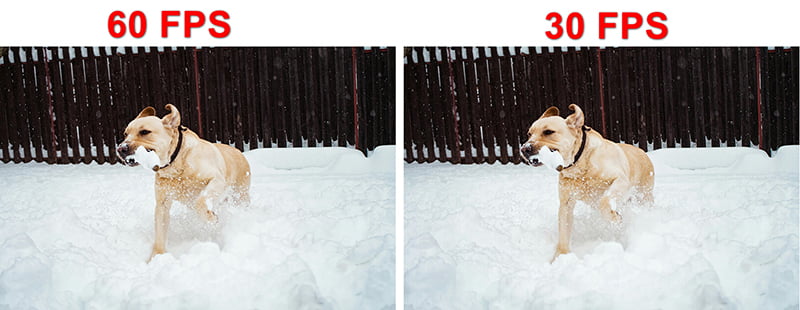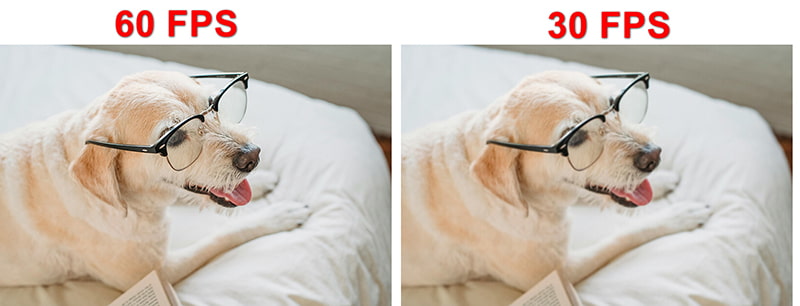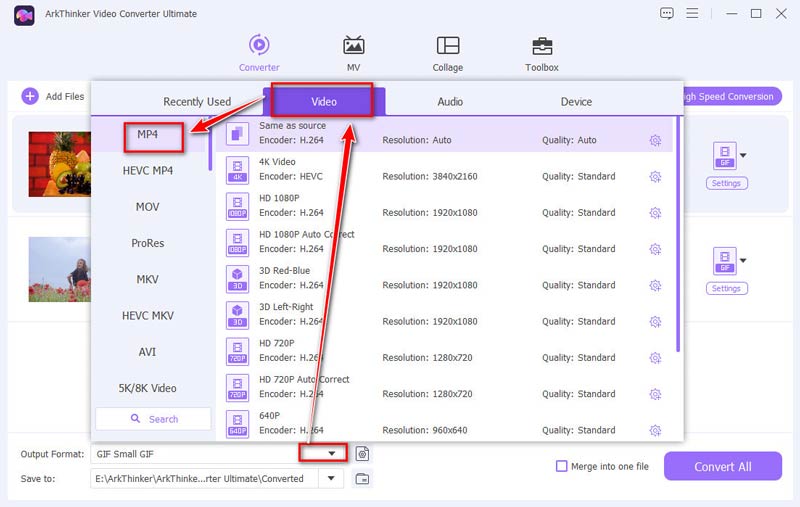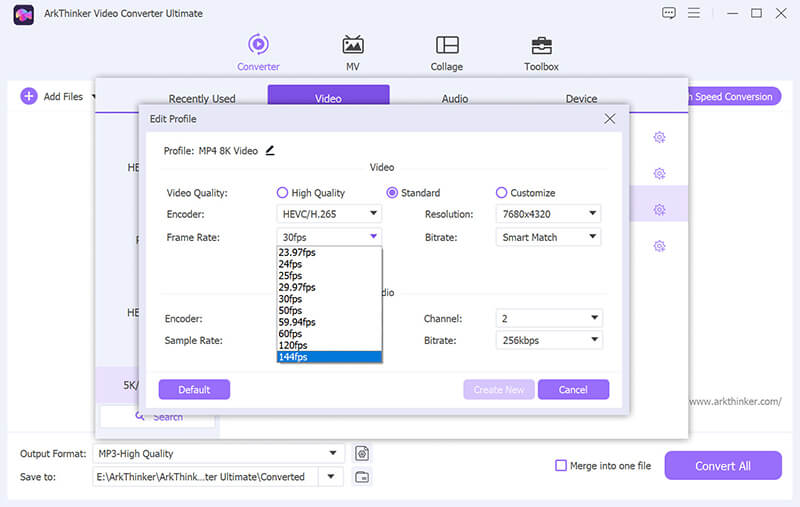30 FPS vs 60 FPS: Which One is Better Frame Rate
Frames per second (FPS) plays a vital role in visual media, shaping our perception of motion in both videos and games. In simple terms, FPS quantifies the number of frames shown in a single second, which directly impacts the smoothness and sharpness of our visual experience. When you're gaming, watching movies, or creating content, choosing what FPS is vital for enhancing your viewing experience is why the debate between 30 FPS vs 60 FPS is emerging. In this article, we will discuss differences between 30 and 60 FPS and determine which is better based on various measurements.

- GUIDE LIST
- Part 1. Differences Between 30 FPS vs 60 FPS
- Part 2. 30 FPS vs 60 FPS: Which is Better
- Part 3. Pros and Cons of 30 FPS vs 60 FPS
- Part 4. How to Change 30 FPS Video to 60 FPS
Part 1. Differences Between 30 FPS vs 60 FPS
When diving into the realm of FPS, the most noticeable difference is how each frame rate impacts motion portrayal.
At 30 FPS, movements can appear slightly choppy, particularly during fast-paced scenes. On the other hand, 60 FPS delivers smoother, more lifelike motion. This difference is particularly evident in action sequences, sports broadcasts, and video games, where quick reactions are essential.
In my experience, watching a thrilling car chase at 30 FPS left me feeling a bit disconnected, while the same scene at 60 FPS had me fully immersed as if I were right there in action.

Part 2. 30 FPS vs 60 FPS: Which is Better
Let’s break down the comparison between 30 FPS and 60 FPS across several key factors:
Smoother Motion

At 30 FPS, motion can appear somewhat jittery, especially in fast-moving sequences. In contrast, 60 FPS provides a more seamless visual experience. When I switched from 30 FPS to 60 FPS in my favorite action games, the difference was startling. Characters moved fluidly, allowing for better control and reaction times, making it the clear winner in this category.
Winner: 60FPS
Input Lag
nput lag is the time it takes for your actions to be reflected on the screen. Typically, achieving 60 FPS minimizes input lag, providing gamers with a distinct advantage. I experienced a noticeable enhancement while playing competitive games; my inputs were more responsive and accurate at 60 FPS, in contrast to 30 FPS, where the delay could negatively affect my performance.
Winner: 60FPS
Demanding on Hardware
While 60 FPS offers an enhanced viewing experience, it comes at the cost of higher hardware demands. Devices need to work harder to maintain this frame rate, which can lead to overheating and reduced battery life. I found that my older gaming console struggled with maintaining 60 FPS in graphically intense games, often defaulting to 30 FPS to ensure smooth performance. Thus, if your hardware is capable, 60 FPS wins; otherwise, 30 FPS might be more practical.
Winner: Depends on your device.
Visual Clarity
At 60 FPS, the clarity of fast movements improves significantly. I often watch sports highlights and find that 60 FPS rendered plays more clearly, helping me catch every detail. Conversely, 30 FPS can sometimes obscure fast actions, making it harder to follow along. Many tools in the market can enhance video quality by changing other parameters besides frame rate.
Winner: 60FPS

Content Type
Finally, the type of content matters. For cinematic films or slower-paced shows, 30 FPS often suffices, maintaining a more traditional feel. However, for gaming and fast-paced video content, 60 FPS shines. My preference shifts depending on the content type; I enjoy cinematic experiences at 30 FPS but always opt for 60 FPS in gaming.
Winner: Depends on your content type.
Part 3. Pros and Cons of 30 FPS vs 60 FPS
- Less demanding on hardware.
- Suitable for cinematic content.
- Sufficient for slower-paced videos.
- Choppy motion in fast scenes.
- Higher input lag in gaming.
- Smoother and clearer motion.
- Lower input lag for gaming.
- Better for fast-paced content.
- More demanding on hardware.
- Can lead to overheating issues on lower-end devices.
Part 4. How to Change 30 FPS Video to 60 FPS
If you've decided to enhance your video content from 30 FPS to 60 FPS, ArkThinker Video Converter Ultimate can make this process pretty easy. It is an all-in-one media converter, editor, and enhancer for video, audio, and images. Surely, you can use its converter feature to increase the video frame rate from 20 FPS to 144 FPS by its advanced algorithms. When you want to upscale a video game or movie quality, this FPS converter can facilitate the process with its user-friendly interface.
- Support over 1000 formats, such as MP4, MOV, AVI, MKV, and more.
- Batch conversion to increase FPS for multiple files.
- Over 20 editing tools for video enhancement, watermark remover, and more.
- Hardware acceleration ensures conversion speeds up to 30 times faster.
Free download, and install this FPS converter on your Windows or Mac computers.
Run the FPS converter and click the Add Files button to import the video whose frame rate you wish to enhance.

Locate the Output Format dropdown option and choose your desired output format.
To change the video frame rate from 30 FPS to 60 FPS without re-encoding, simply choose the option for Same as source.

This is the most important step: To increase the video frame rate, click on the Custom Profile option. Here, you can change the video Frame Rate, easily converting from 30 FPS to 50, 60, 120, or even 144 FPS.

Moreover, you have the option to adjust and change the resolution, channels, sampling rate, bitrate, audio codec, and more. Once you’re happy with your adjustments, click OK to save your preferences.
Finally, set the Output Folder to specify where you want your video file saved. After everything is configured, click Convert All to start converting the video to 60 FPS.

Conclusion
In the battle of 30 FPS vs 60 FPS, the choice ultimately depends on your needs and hardware capabilities. While 60 FPS provides a smoother, more immersive experience, 30 FPS remains practical for various content types. Whether you're a gamer seeking fluidity or a viewer enjoying cinematic quality, understanding the difference between 30 and 60 FPS can significantly enhance your viewing pleasure. So, consider your preferences and hardware, and choose wisely for the best visual experience!
What do you think of this post? Click to rate this post.
Excellent
Rating: 4.8 / 5 (based on 404 votes)
Relative Articles
- Edit Video
- 4 Ways to Blur Face in Video by AI
- 2024 60FPS Video Converters to Upscale Higher Quality
- The Best YouTube Video Format You Want to Convert 2024
- 3 Ways to Blur Face in Video by AI
- 2 Ways to Crop a Video Dimension in CapCut [2024 Guide]
- 3 Ways to Remove Watermark from PowerDirector Videos
- How to Remove Watermark from Renderforest Videos in 2 Ways
- Movavi Watermark: Full Guide to Add and Remove It
- Crop WMV File Using 4 Easy Methods for Quick Results
- How to Make a Short Video Longer with 3 Different Methods



